State the rules used for drawing images formed by spherical mirrors.
Rules for drawing images formed by spherical mirrors:
The position of the image formed by spherical mirrors can be found by considering any two of the following rays of light coming from a point on the object.
(i) A ray proceeding parallel to the principal axis, after reflection, will pass through the principal focus in the case of a concave mirrors [Fig.(a)], and appear to diverge or come from focus in the case of a convex mirror [Fig.(b)]. 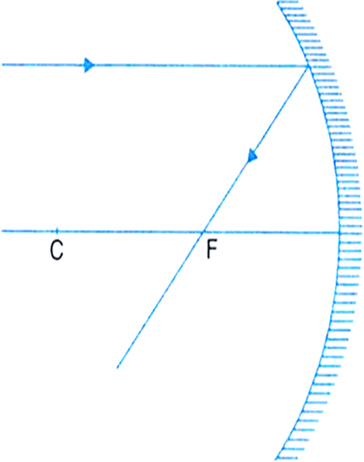
Fig.(a). A ray parallel to the principal axis through F after reflection from a concave mirror
Fig.(b) A ray parallel to the principal axis appears to come from F after reflection from a convex mirror.
(ii) A ray passing through the principal focus in the case of a concave mirror [Fig.(c)], and directed towards the principal focus in the case of a convex mirror will [Fig.(d)], after reflection, pass parallel to the principal axis. 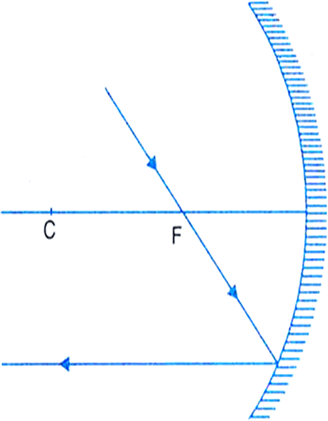
Fig. (c) A ray through F becomes parallel the principal axis after reflection from a concave mirror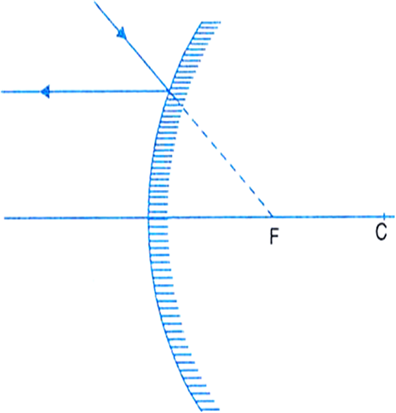
Fig.(d) A ray directed towards F becomes parallel to the principal axis after reflection from a convex mirror
(iii) A ray passing through the centre of curvature in the case of a concave mirror and directed towards the centre of curvature in the case of a convex mirror falls normallly (∠i = ∠r = 0°) and is reflected back along the same path. This is illustrated in fig. (e) and fig. (d).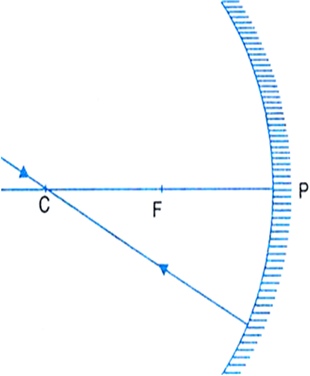
Fig.(e) A ray passing through C is reflected back along of same path after reflection from a concave mirror.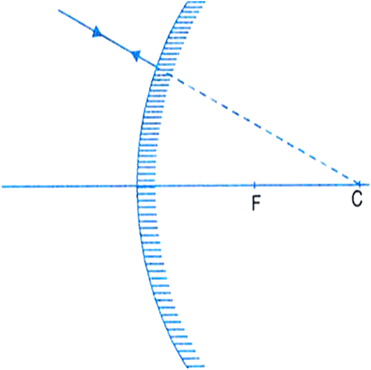
Fig.(F) A ray directed towards C is reflected back along same path after reflection from a convex mirror.
(iv) A ray which is incident obliquely to the principal axis, towards the pole P, on the concave mirror or a convex mirror is reflected obliquely, following the laws of reflection at the point of incidence, i.e., the incident and reflected rays make equal angles with the principal axis. This condition is illustrated in fig.(G).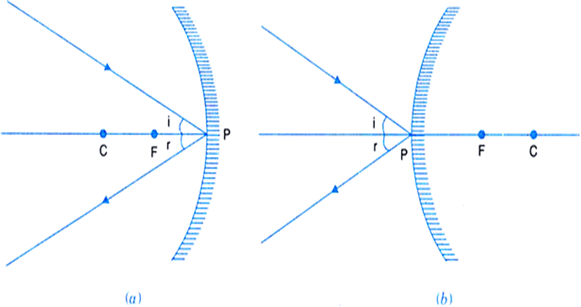
Fig.(G) Incident and relfected rays follow the laws of reflection





